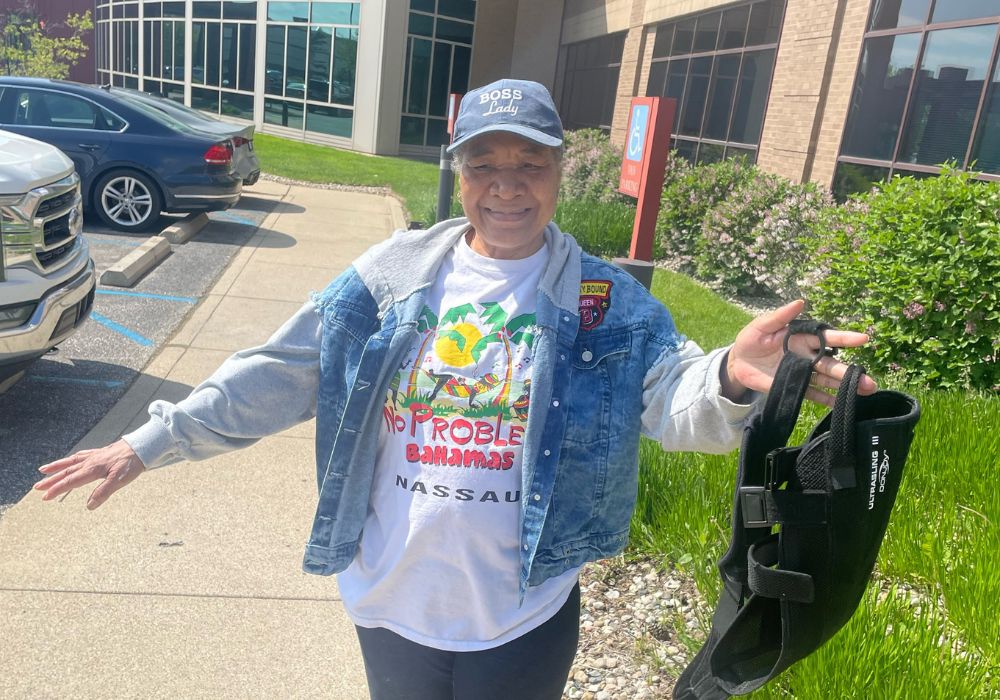Subacromial impingement syndrome or “swimmer’s shoulder” affects the group of tendons inside your shoulder called your rotator cuff.
When your rotator cuff tendons become irritated or inflamed, they rub on the shoulder blade and you feel pain, weakness and have a reduced range of motion. This usually occurs when you are involved in a repeated overhead activity, such as swimming.
Read on to learn the symptoms, causes, and treatment options for subacromial impingement syndrome.
What are the parts of a shoulder?
To better understand what causes subacromial impingement syndrome, it’s helpful to understand the different components of the shoulder and how they connect.
Two joints make up the shoulder:
- The acromioclavicular joint connects your shoulder blade to your collarbone and allows you to raise your arm above your head.
- The glenohumeral joint is a ball and socket joint. It gives you the ability to rotate your shoulder in a circle and move it up and out from your body.
Soft tissue-like ligaments, cartilage, and tendons surround your glenohumeral joint. They help cushion the joint’s movement and keep the large humeral head in the shallow socket cavity.
Your rotator cuff is a group of tendons and muscles surrounding the top of the humerus to keep the head in place and allow your arm to rotate.
The deltoid muscle is the largest and strongest muscle in your shoulder. Tendons attach it to the clavicle and humerus, and it provides you the strength to lift your arm.
Your bicep tendon connects your forearm’s front muscle to your shoulder’s top socket. It allows your forearm to rotate and elbow to bend.
What causes shoulder impingement?
Most cases of subacromial impingement are caused by overuse. Repeated overhead motion can cause inflammation, making the tendons swell and “catch” on your upper shoulder bone.
There are a few other less likely causes for subacromial impingement:
- Shoulder instability
- Curved or hooked acromion
- Previous shoulder injury
- Muscular weakness
Make an appointment with a shoulder specialist
Symptoms and diagnosis of subacromial impingement syndrome
While symptoms across different types of shoulder conditions can be similar, typical symptoms associated with subacromial impingement include:
- Weakness when lifting your arm
- Difficulty reaching up behind your back
- Tenderness in the shoulder
- Catching or grating of the muscle when you rotate or raise your arm
To determine whether you have subacromial impingement syndrome, your physician will ask you for a complete medical history, have you describe your symptoms and conduct a physical examination. An X-ray or MRI may be necessary to confirm the diagnosis and determine if there are other problems.
Does shoulder impingement require surgery?
A shoulder specialist can often treat subacromial impingement syndrome without surgery. Resting from the activities that caused your impingement and following your physician’s non-operative instructions will most likely lead to healing.
Some non-operative treatment options are:
- Rest
- Over the counter pain medication
- Daily stretching in a warm shower
- Avoiding repetitive activities that move your shoulder
- Physical therapy
If your pain from subacromial impingement persists or gets worse, your physician may suggest a cortisone injection in your shoulder. If the cortisone injection isn’t effective, you may have a rotator cuff tear, which would most likely result in surgery. Your physician may perform an ultrasound, MRI or arthrogram to confirm the tear.
Once a tear is confirmed, surgery involves re-attaching the tendons to the humerus head, which is the “ball” in your shoulder’s ball and socket joint.
Shoulder surgeons do most rotator cuff repairs arthroscopically, which means your surgeon will use a camera and instruments to repair your tear through small incisions.
Learn more about OrthoIndy shoulder treatments
How do you prevent shoulder impingement?
While there are many different shoulder pain causes, if you use your shoulder excessively for work, sports or daily life, subacromial impingement syndrome is pretty common.
Good training and proper recovery are the key ways to prevent impingement.
Here are six tips to keep your shoulder healthy and prevent subacromial impingement:
- Train your rotator cuff muscles to keep them strong
- Rest instead of pushing through your pain
- Keep a regular training or workout schedule
- Make sure you are training all of the muscles in your shoulder
- Ice your shoulder after a hard workout to keep inflammation down
- Make sure your technique is correct for athletes
Find out what’s really causing your shoulder pain
If your shoulder pain causes you to miss out on normal day-to-day activities, we can help. Request an appointment online or call OrthoIndy at 317.802.2000 to book an appointment with one of our shoulder specialists.
If your shoulder injury or condition is recent, you can walk right into one of our OrthoIndy Urgent Care locations for immediate care. For rehabilitation and physical therapy, no referral is needed to see one of our physical therapists.





